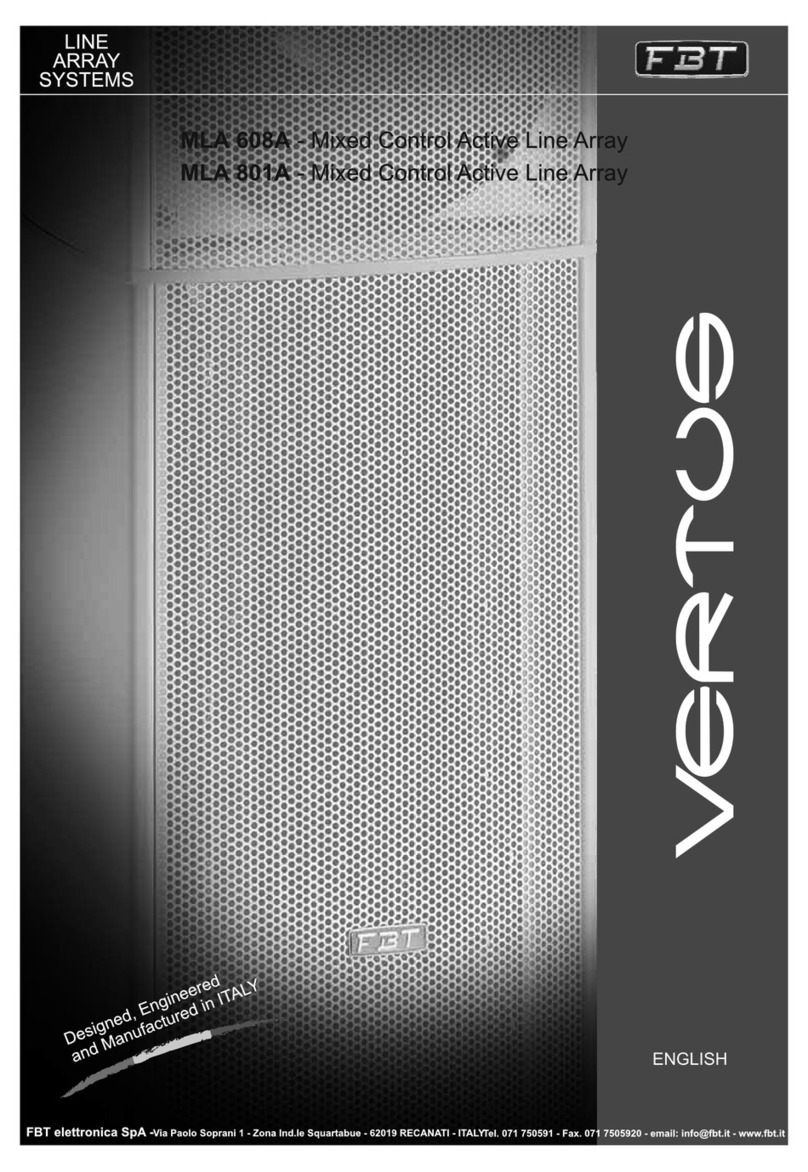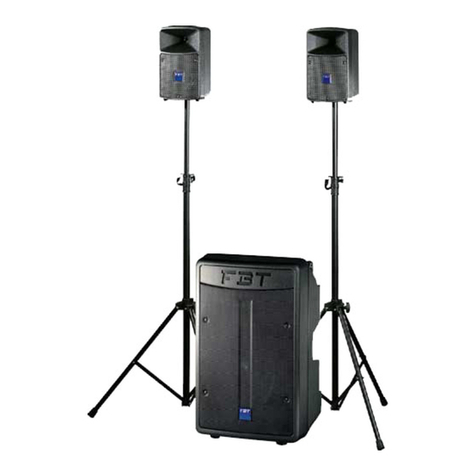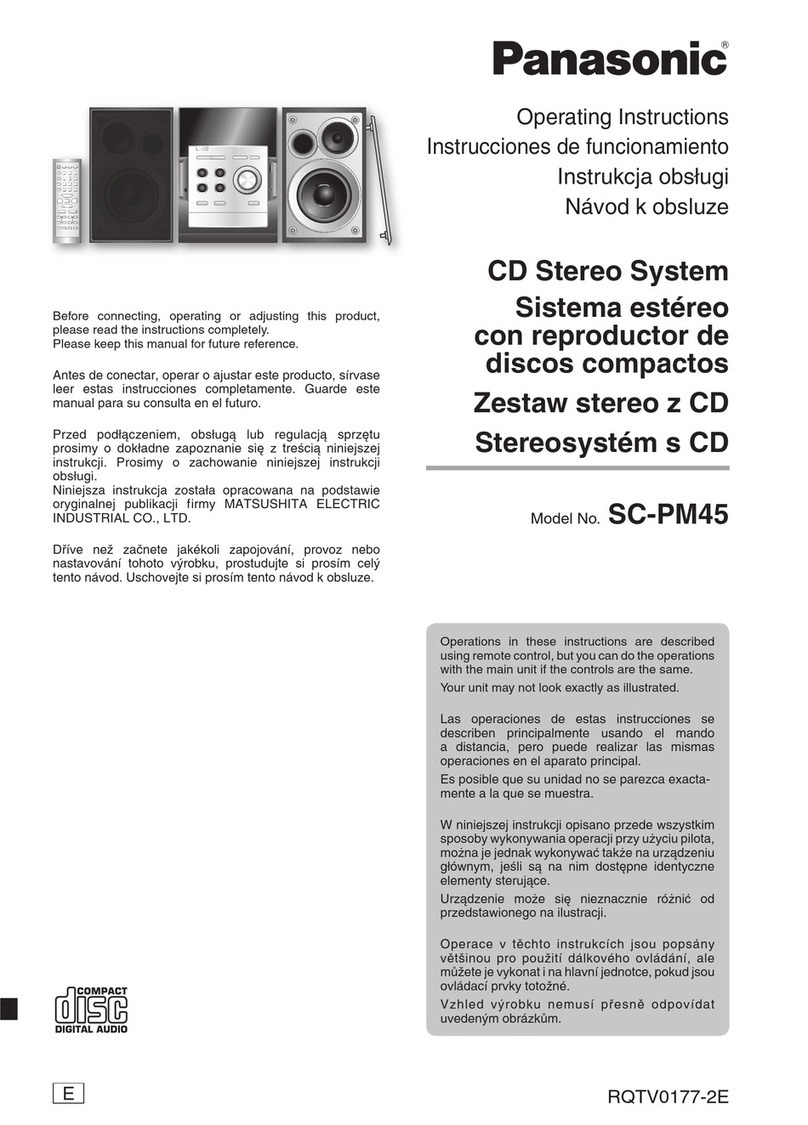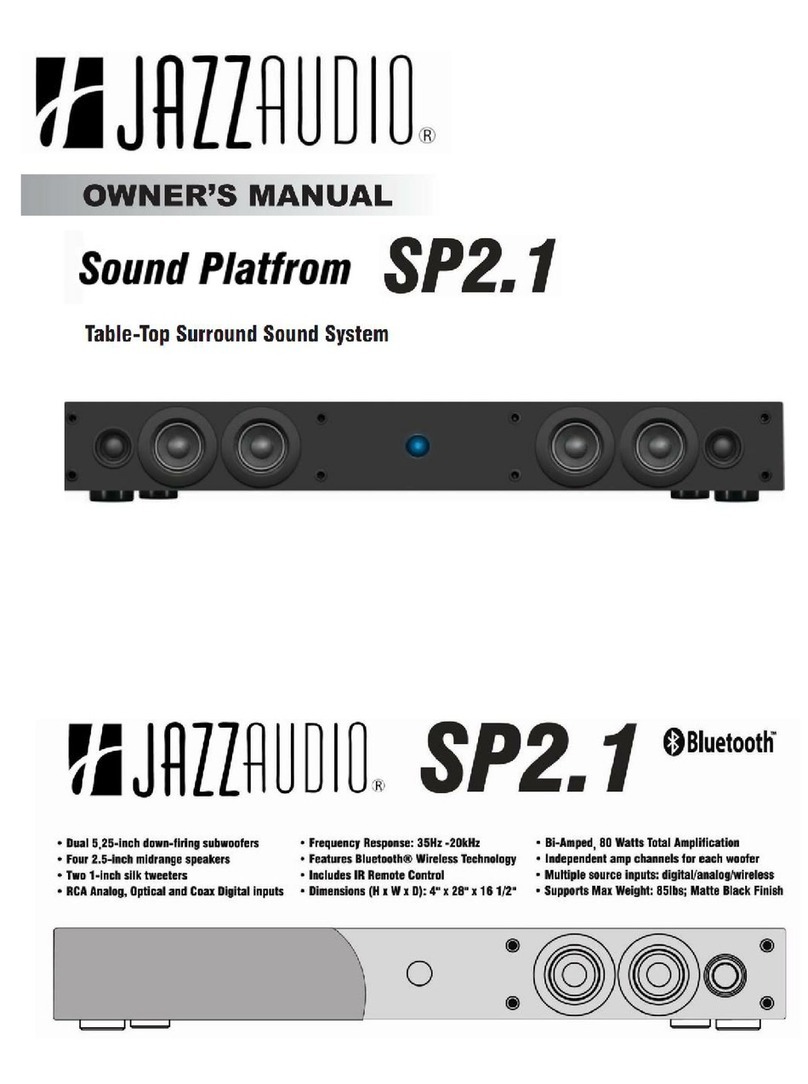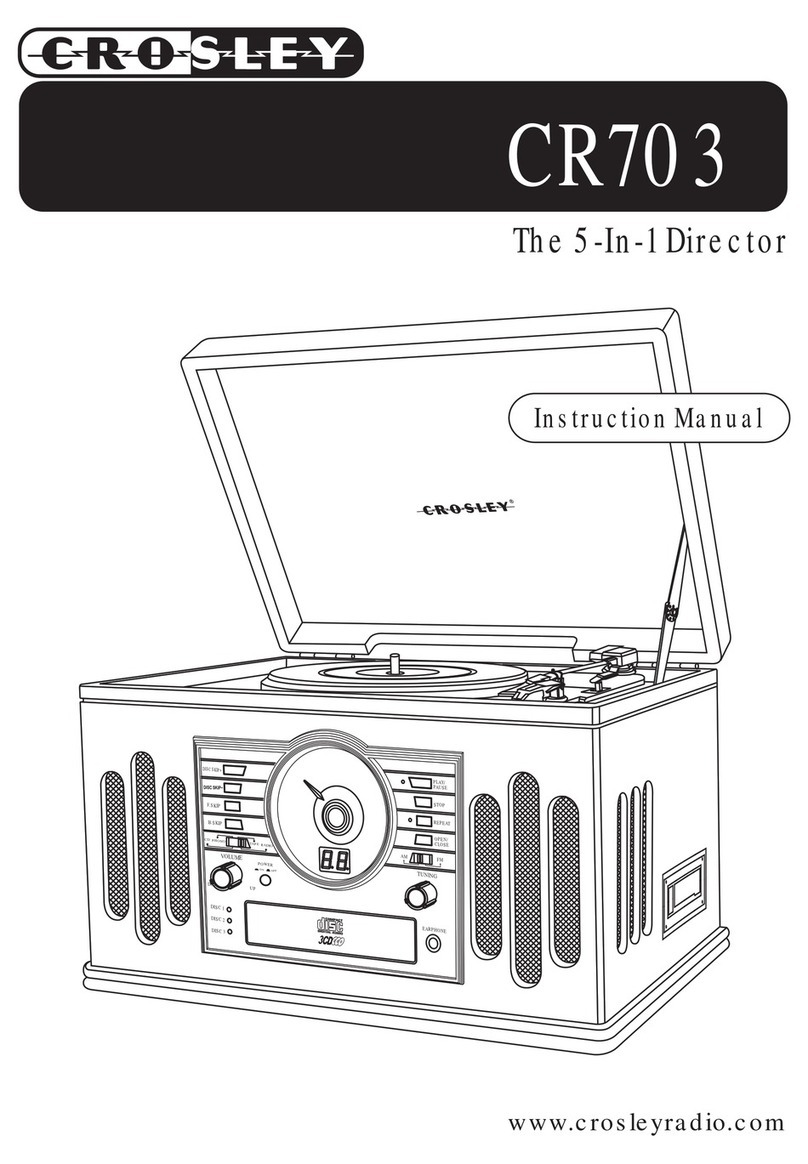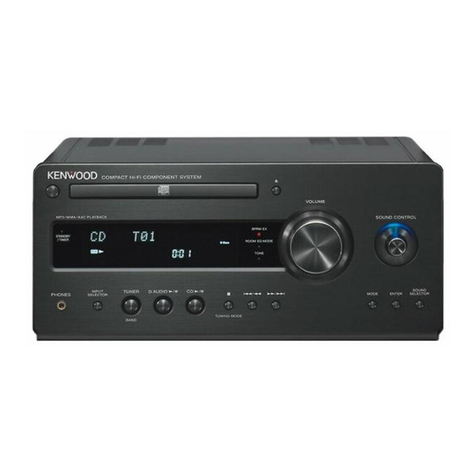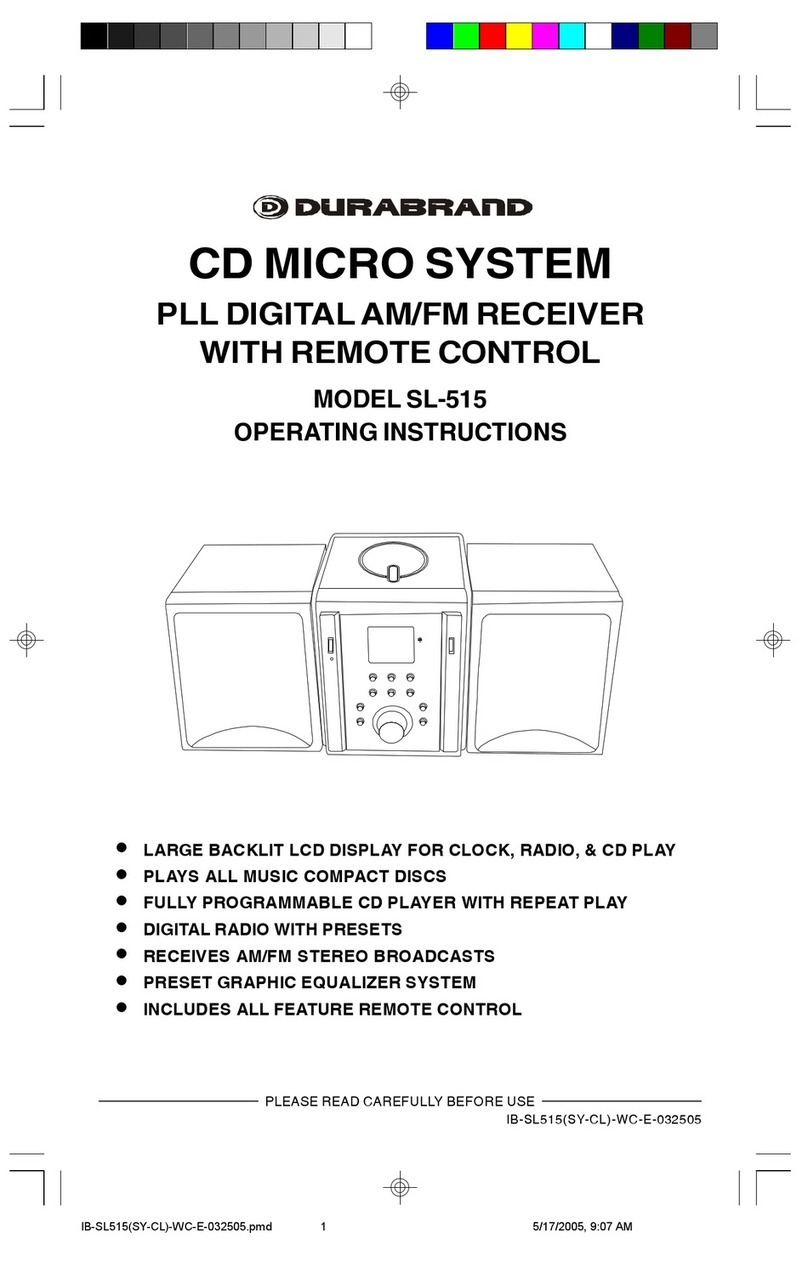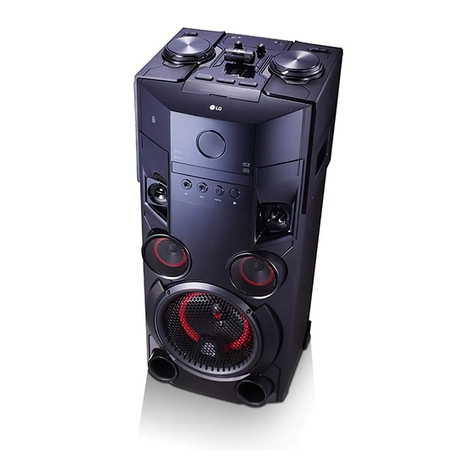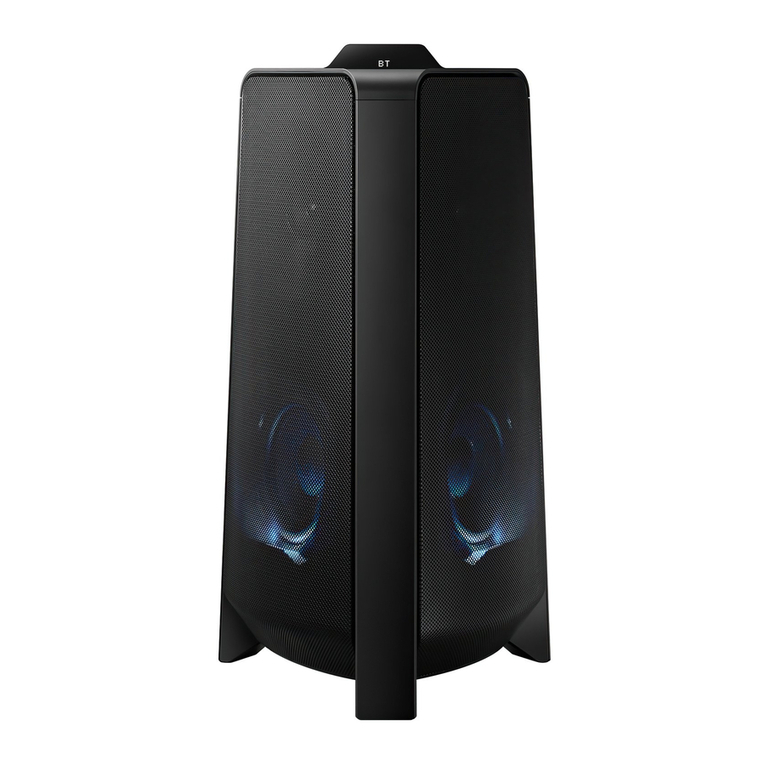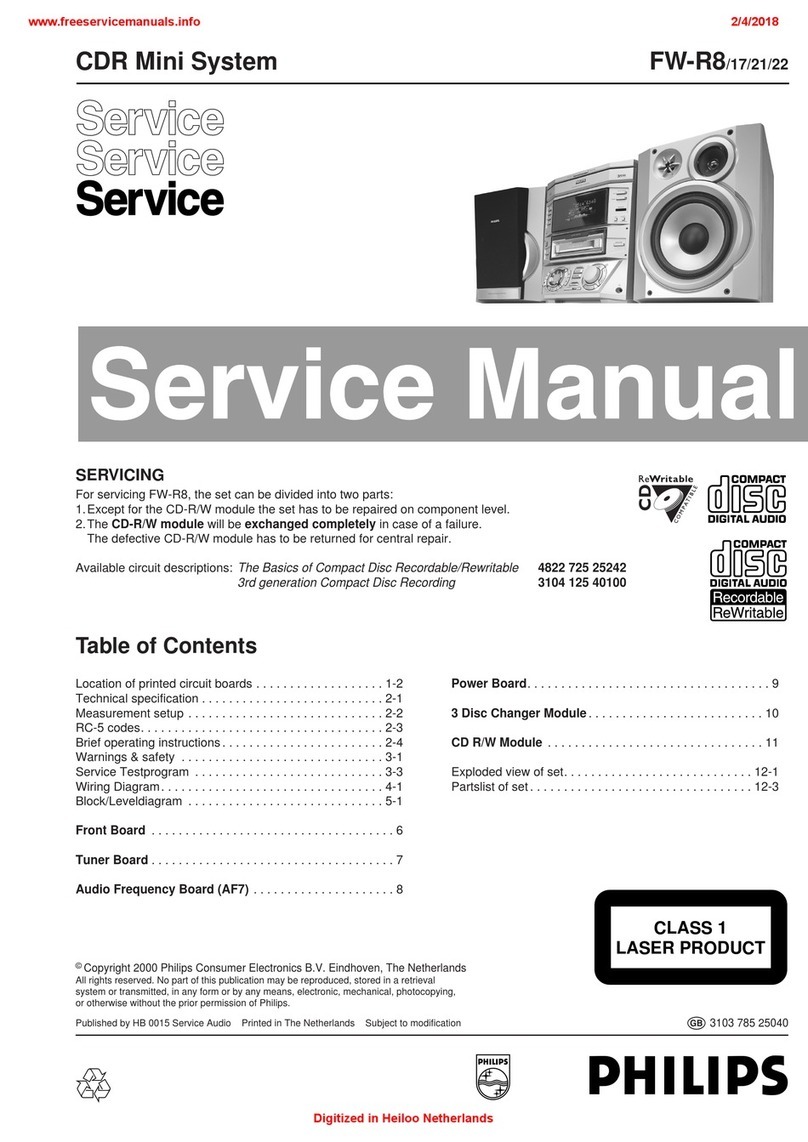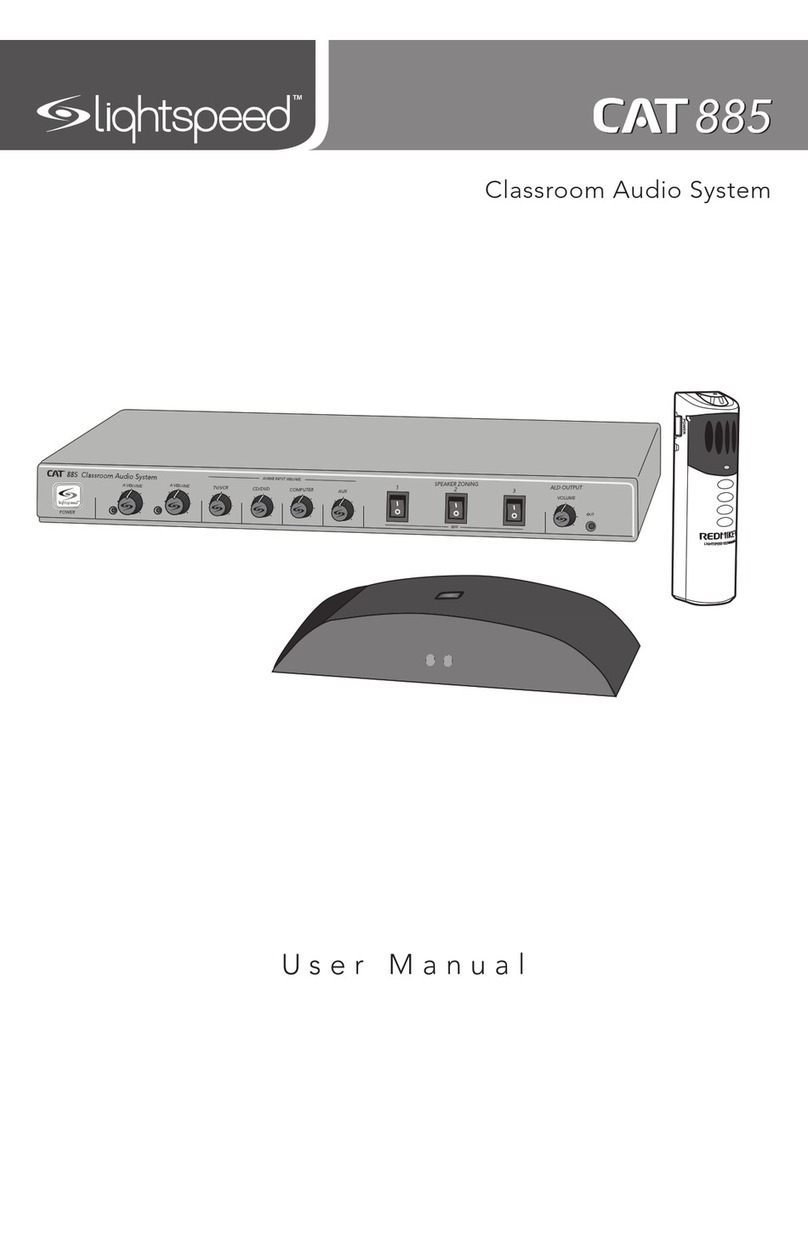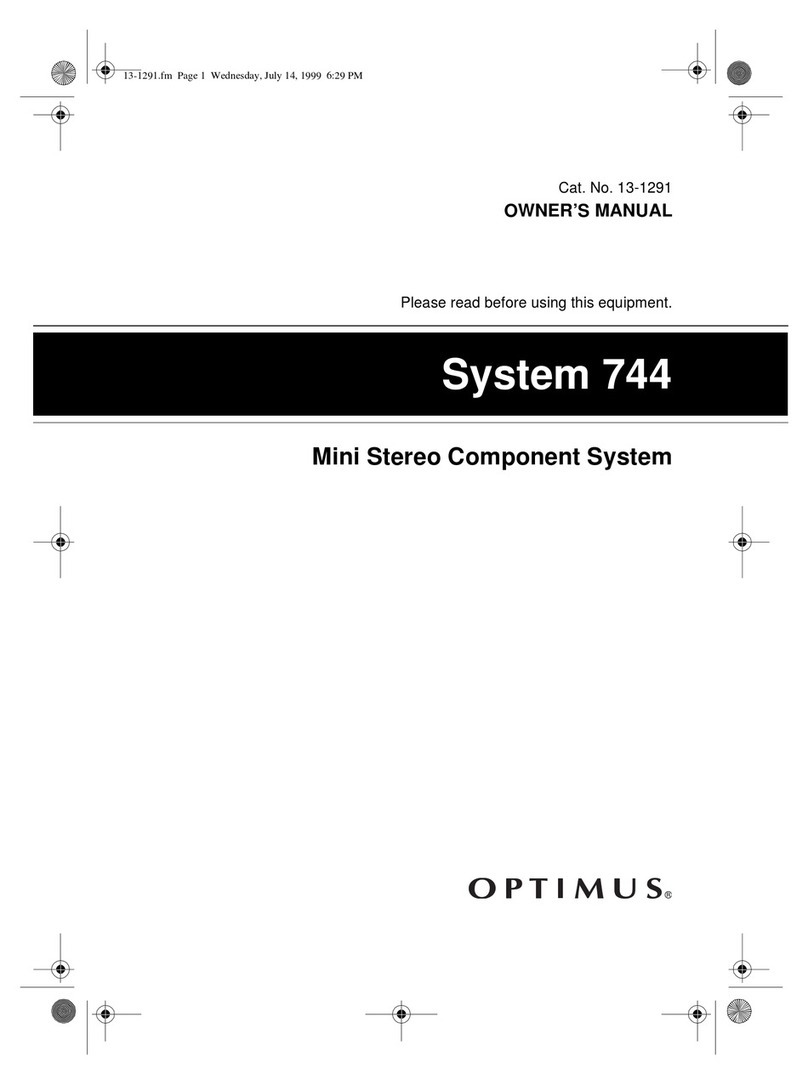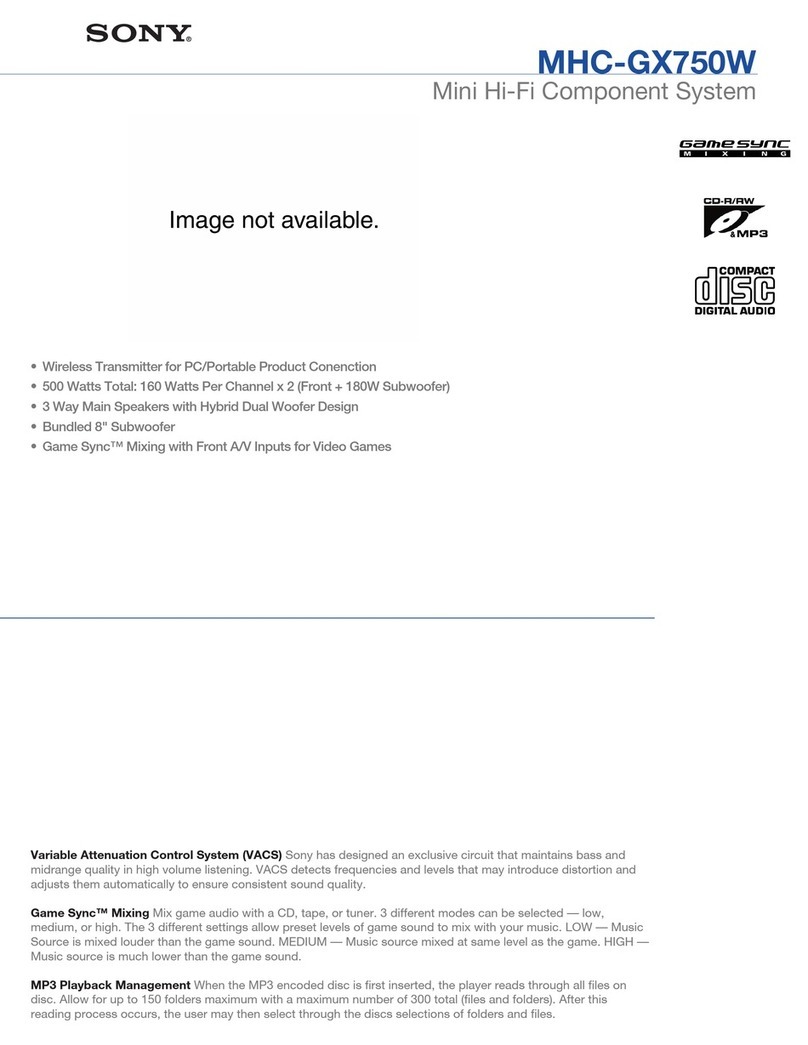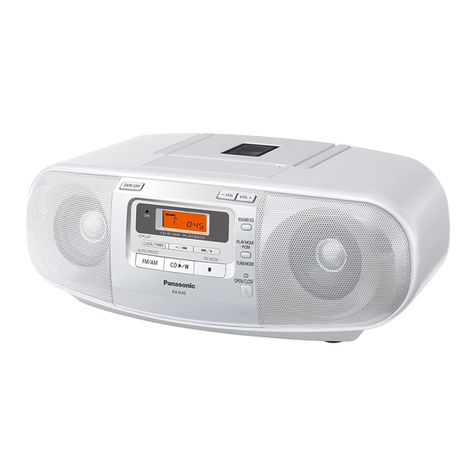Fbt AMICO 10 USB User manual

R
10 USB
Integrated Sound System
FBT elettronica SpA -
Via Paolo Soprani 1 - Zona Ind.le Squartabue - 62019 RECANATI - ITALY
Tel. 071 750591 - Fax. 071 7505920 - email: [email protected] - www.fbt.it
ENGLISH

INDEX
WARNING - IMPORTANT SAFETY INSTRUCTIONS - PRECAUTIONS
GENERAL FEATURES
COVER / HANDLE
GENERAL FEATURES
DIMENSIONS
CONNECTORS
ARTWORK
CONTROLS & FUNCTIONS
Mono Section / Stereo Section
Effect Section
Master Section
USB INTERFACE
SUPPLY AND POWER SECTION
BLOCK DIAGRAM
DIAGRAMS
THE AMICO SYSTEM IN VARIOUS APPLICATIONS
TECHNICAL SPECIFICATIONS
AMICO 1O SAT
1
2/3
4
5
6
7
8
9
10
11
12
13
14
15
16/17
18

IMPORTANT SAFETY INSTRUCTIONS
TO REDUCE THE RISK OF ELECTRIC SHOCK
DO NOT REMOVE COVER (OR BACK)
NO USER SERVICEABLE PARTS INSIDE
REFER SERVICING TO QUALIFIED SERVICE PERSONNEL
TO REDUCE THE RISK OF FIRE OR ELECTRIC SHOCK
DO NOT EXPOSE THIS EQUIPMENT TO RAIN OR MOISTURE
!
WARNING
RISK OF ELECTRIC SHOCK
DO NOT OPEN
|
|
|
<
|
|
|
<
!
!
WARNING
|
|
|
<
|
|
|
<
!
IMPORTANT SAFETY INSTRUCTIONS
1

GENERAL FEATURES
PWM AMPLIFIER SWITCH MODE POWER SUPPLY ANALOG PROCESSOR TONE CONTROLS LIGHTWEIGHT
The new AMICO 10 USB is a completely integrated ready-wired sound system offering a convenient «plug & play» solution for houses of
worship, church youth group events, school classrooms, auditoriums and various school activities, business conferences and small musical
groups performing live in small to medium sized venues. The mixer, amplification and subwoofer are contained in a single ultra lightweight,
yet extremely sturdy polypropylene enclosure. A storage compartment in the rear of the AMICO 10 USB houses the two 2-way satellite
speakers, allowing the wheeled system to be transported as a one piece unit.
> Analog audio processor with 24dB/oct electronic crossover network and ADAP (Advanced Dynamic Active Protection) for total protection
of the components
> 3 class D power amplifiers with switch mode power supplies to power the subwoofer and the two satellite speakers
> Built-in mixing console with 6 x XLR mic inputs with phantom power supply, 2 x mono inputs and 4 x stereo input channels, 3-band EQ., 99
selectable digital effects with effects send & return controls, 1 x effects send, 1 x monitor send, headphone jack out and master volume
control
> USB in/out to play back music programs/files from a PC or to record from the master audio output of the AMICO to a PC
recording program
> The AMICO 10 USB provides a quick and easy set-up: complete system setup in less than 5 minutes
> Multi-function knobs to block/unblock and remove the cover/lid transport handle
> Removable back panel for access to the satellite speaker’s storage compartment. The back panel protects the satellite
speakers and keeps them secure when transporting the complete system
2

GENERAL FEATURES
Fully-integrated mixer
Fold-away cover / handle
Trolley-type transport system with
100 mm diameter non-marking
rubber wheels
Multifunction knobs to lock/release
or completely remove the cover-handle
Removable rear panel to protect and
immobilise the satellite speakers in
their storage spaces during transportation
All the integrated internal components are
prewired and ready for use, without requiring any
additional connections for truly
user-friendly operation
Multifunction compartment for system expansion
with wireless microphone, CD player, MD player, etc...
A pair of two-way passive cabinets
Satellites storage space with locating
guide to prevent even the smallest
movements
3
O
3 power amplifiers driving the
sub-woofer and 2 satellites

COVER / HANDLE
INSTRUCTIONS FOR OPENING ( TRANSPORT POSITION ) AND REMOVING THE COVER/HANDLE
4
3
12
4

GENERAL FEATURES
Speakon connector input for connection
to the system amplifier
Adapter for horizontal wall support
Built-in handle
Built-in adapter for stand mounting
FBT logo
Protective metal grille
5
AMICO 10 SAT

DIMENSIONS
6
SUPPLIED ACCESSORIES

CONNECTORS
XLR connectors are “female” for input devices and “male” for output signals. As a matter of fact, the XLR-XLR connecting cables used, for instance, to connect
a microphone to a mixer always have a female socket at one end and a male plug at the other end.
They are three-pole connectors often used to transmit balanced mono signals. XLR three poles correspond to ground (1), positive signal (2) and negative
signal (3) respectively. Generally, Cannon are used to connect microphones to mixers or preamplifiers; otherwise, they are often used to connect the
balanced outputs of a mixer to loudspeakers and monitors.
Jacks are the typical connectors used for transmitting two separate signals of two channels -right and left- by means of a single connector and, thus, they can
be mono or stereo.
Mono (TS) Jack connectors -also called unbalanced- differ from stereo (TRS) jack connectors –also called balanced- in their structure. Mono jack plugs are
divided into two parts, Tip and Sleeve, to which the two poles are connected: the two poles are, respectively, the real signal, through the wire of the mesh
(positive pole), and the earth, located at the level of the metal shielding mesh beneath the rubber protective coating.
Stereo or balanced Jack connectors are divided into three parts since they feature a central Ring connected to a second wire, which is the third pole (negative
pole). In this case, conventionally, as for balanced signals, the left channel travels over the tip and the right one over the ring. Stereo Jack connectors are often
used instead of the mono ones when a mono balanced signal shall be transmitted, i. e. in order to generate an audio signal without earth hum and interference
and, thus, as faithful to the original as possible.
Balanced connections are recommended mainly if cables are longer than three meters since the length is proportional to the possibility of interferences and,
therefore, it could affect signal “cleanliness”.
RCA connectors cannot be balanced since they only have two poles: signal (centre pin) and ground (outer ring). Therefore, they are unbalanced mono
connectors.
This type of connectors, often paired, are mainly used for the stereo signals of hi-fi devices such as CD or record player, etc.
SPEAKON is a connector which is specially adapted for connecting power terminals to loudspeakers; when inserted in an appropriate socket it locks so as to
prevent accidental disconnection; moreover it is equipped with protection against electrical shocks and guarantees the correct polarisation.
7
stereo
mono
schema
diagram
schema
diagram
RCA PHONO JACKS
CONNESSIONE DI USCITA STEREO CONNESSIONE DI USCITA BRIDGE
AL DIFFUSORE
TO SPKR
AL DIFFUSORE
TO SPKR
USCITA POSITIVA
POSITIVE OUT
USCITA NEGATIVA
NEGATIVE OUT
USCITA NEGATIVA
NEGATIVE OUT
USCITA POSITIVA
POSITIVE OUT
STEREO OUT CONNECTION BRIDGE OUT CONNECTION
maschio
male
femmina
female
schema
diagram
BASE
PUNTA
TIP

MONO SECTION STEREO SECTION EFFECT SECTION MASTER SECTION
SUPPLY AND POWER SECTION
8
ARTWORK

CONTROLS & FUNCTIONS
MONO SECTION_________________________________
High / Mid / Low:
range of the signals. The tone control is flat with no equalisation
when the knob is in the central position (0); frequencies are
gradually attenuated by turning the knob counterclockwise and
enhanced by turning it clockwise.
Mon: adjusts the level of the signal on the channel to send to the
MON jack output. The MON output signal is subject to the action of
the tone controls but it is not affected by the volume control.
Eff: serves to send the channel signal to the digital effects
processor, in accordance with the volume control; this feature
makes it possible to add an adjustable effect component on each
channel.
Pan: the pan control adjusts the position of the sound in the stereo
stage so that the stereo image can be modified constantly as
required. Turning the knob to the left or right alters the proportion of
the two signals on the left and right channels. With the knob turned
fully in one direction the signal on the opposite channel is reduced
to zero.
Gain: adjusts preamplification of signals supplied on the XLR and
Jack inputs, optimizing the level for correct operation of the channel
input circuits. To achieve the optimal balance between the S/N ratio
and the dynamic range, set the level so that the PEAK LED only
lights up in the presence of signal peaks. The 10 to 60 scale
indicates MIC input adjustment level; the -20 to 30 scale indicates
the LINE input adjustment level.
Vol: adjusts the output level of the signal to be sent to the main
controls. In normal circumstances the best performance of the
channel circuit is obtained with the knob set to approximately the ¾
position and with the Gain adjusted in such a way as to obtain the
required level.
Mute: serves to activate/deactivate the channel.
Peak: this LED illuminates when the signal after the equalisation
stage is close to the saturation threshold: in this case the problem
can be remedied by means of the GAIN control.
REAR PANEL
Mic: electronically balanced XLR connector socket designed for
the connection of low level signal sources such as low impedance
microphones.
Line: balanced and unbalanced Jack connector inputs.
Electronically balanced, designed for connection of high level
sources such as keyboards, guitars, etc. This input also accepts
mono jacks; when a mono jack is inserted the signal is
automatically unbalanced.
STEREO SECTION______________________________
High / Mid / Low: tone controls to adjust the treble, mid, and bass
range of the signals. The tone control is flat with no equalisation
when the knob is in the central position (0); frequencies are
gradually attenuated by turning the knob counterclockwise and
enhanced by turning it clockwise.
Mon: adjusts the level of the signal on the channel to send to the
MON jack output. The MON output signal is subject to the action of
the tone controls but it is not affected by the volume control.
Eff: erves to send the channel signal to the digital effects
processor, in accordance with the volume control; this feature
makes it possible to add an adjustable effect component on each
channel.
Bal: adjusts the position of the sound in the stereo stage so that the
stereo image can be modified constantly as required. Turning the
knob to the left or right alters the proportion of the two signals on the
left and right channels. With the knob turned fully in one direction
the signal on the opposite channel is reduced to zero.
Gain: adjusts preamplification of signals supplied on the XLR and
Jack inputs, optimizing the level for correct operation of the channel
input circuits. To achieve the optimal balance between the S/N ratio
and the dynamic range, set the level so that the PEAK LED only
lights up in the presence of signal peaks.
tone controls to adjust the treble, mid, and bass
STEREO SECTION______________________________
Vol: adjusts the output level of the signal to be sent to the main
controls. In normal circumstances the best performance of the
channel circuit is obtained with the knob set to approximately the ¾
position and with the Gain adjusted in such a way as to obtain the
required level.
Mute: serves to activate/deactivate the channel.
Peak: this LED illuminates when the signal after the equalisation
stage is close to the saturation threshold: in this case the problem
can be remedied by means of the GAIN control.
REAR PANEL
Mic: electronically balanced XLR connector socket designed for
connection of low level signal sources such as low impedance
microphones.
L-mono-R: balanced input sockets for stereo Jack connector;
provide the facility to connect mono (using only the L-mono socket)
or stereo sources (using both sockets) to the mixer.
STEREO sources, such as, for example, CD players,
keyboards, etc. include both a left and a right channel which
shall necessarily be managed by controls allowing to adjust
both signals at the same time.
This is why stereo input channels have been added: basically,
they combine two mono channels unifying their controls.
Instead of the PAN control, the stereo channels feature a
balance control (BAL) allowing to balance possible level
differences between the signals of the two channels.
9

CONTROLS & FUNCTIONS
EFFECTS SECTION _____________________________
AMICO 10 USB features an effect section with a digital audio signal
processor that can simulate the sounds of any acoustic
environment. Its 99 different effects allow to add special sound
characteristics to the direct signals passing through mixer
channels.
Mon: for adjusting the quantity of effect return signal to be sent to
the MON jack output.
Eff Snd: for controlling the general signal level to be sent to the
SEND jack output and to the return effect input.
Pgm: the display will show the number of the selected programme;
to select and confirm use the «PRESS TO SEL» selector switch.
Tap: the TAP button sets the desired repetition time according to
the music rhythm; the last setting is stored when the system is
turned off.
Vol: volume control of the effect sent to the MAIN L/R outputs.
Mute: for switching the channel on/off.
Peak: the PEAK LED indicates signal peak level. It lights up when
the effect output signal is slightly below the saturation point.
BACK PANEL
Send / Return: the effect send signal to be connected to the
external effect input is in the SEND jack socket. Its level is
controlled by the EFF SEND potentiometer.
The RETURN L/R jack sockets allow to connect the external effect
output to the mixer, simultaneously bypassing the internal effect.
Foot SW.: mono jack socket for connecting a remote control which
enables/disables the internal effect.
00-02
03-05
06-07
08-09
10-12
13-15
16-18
19
20-26
27-29
30-35
36-39
40-43
44-47
48-49
50-58
Small Hall
Mid Hall
Big Hall
Church
Small Room
Mid Room
Big Room
Cathedral
Plate
Spring
Gated Rev.
Reverse
Early Refl.
Ambience
Stadium
Delay
59.
60-65
66-69
70-73
74-79
80-81
82-83
84-85
86-87
88-89
90
91
92-93
94-95
96-97
98-99
Echo
Chorus
Flanger
Phaser
Pitch Shift
Chorus & Rev
Flanger & Rev.
Pitcher & Rev
Pitch & Rev.
Delay & Re
Delay & Gated
Delay & Reverse
Delay & Chorus
Delay & Flanger
Delay & Phaser
Delay & Pitch
Program Chart
SMALL HALL / MID HALL / BIG HALL
HALL programmes represent the real emulation of great concert halls
where musicians are located on stage in the middle of a big sound-
reflecting environment. HALL programmes allow to merge in a
homogeneous mix the different instruments coming from the single
channels, thus creating an extremely real environment around them.
These programmes are perfect for single voices, choruses and acoustic
instruments.
CHURCH
The reverb of a church with plenty of late reflections.
ROOM
ROOM programmes reproduce the environment of mid-size acoustic
concert halls, characterized by special sound colours due to the reflecting
walls that can generate several reflections. These environments are for
example «music clubs», lounges and rehearsal rooms, where the effect
fades slightly fast but maintains a good clearness and intelligibility for the
original signal. ROOM programmes are especially suitable for cinema and
television, as well as for rhythm and accompaniment instruments.
CATHEDRAL
Long and narrow reverb of a great cathedral, suitable for instrumental solos
or voices of lentos.
PLATE
The PLATE reverb was originally obtained with a thin, spring-suspended
metal sheet that was forced to vibrate by a transducer modulated by an
audio signal. The result on the sound transmitted through PLATE was that
of a sound coming from a vast open space. PLATE programmes
synthesize the sound of metal plates with initial high diffusion and a
relatively bright and coloured sound. These programmes are designed to
be used as a part of the music, by softening and thickening the original
sound; they are very common in pop music and particularly in percussions.
SPRING
for simulating the classical reverb of a spring.
GATED REV.
This effect represents a reverb artificially cut-off and was made famous by
the song «In the air tonight» by Phil Collins.
REVERSE
A reverb where the envelope curve is reverted, i.e. the volume is initially low
and then rises.
EARLY REFL.
This reverb is characterized by very marked early reflections and is
specially suitable for dynamic signals (drums, percussions, slap-bass,
etc.).
AMBIENCE
This reverb programme simulates a mid-size room without late reflections.
DELAY
DELAY is an effect used to change the sound of electric or amplified
musical instruments. Sometimes it is also improperly referred to as
«echo». The DELAY general function is that of recording an incoming
sound and playing it with a preset time delay. Generally the delayed sound
is added to the original signal instead of substituting it; in this case the
overall effect is similar to that of the echo.
ECHO
The ECHO effect electronically generates delays at regular intervals for
deeper and wider sounds.
CHORUS
This effect adds a slight frequency variation to the original signal; therefore,
together with TREBLE variation, produces a pleasant suspended sound
effect. The CHORUS effect is so often used for signal diffusion in so many
different ways that any recommendation about containing its use would be
vain. The modulation rate is from slow to fast CHORUS effect.
FLANGER
FLANGER is an electronic audio effect obtained through the use of a delay
line - with considerably long times – through which the signal to be treated
passes. The delayed signal is then mixed with the original signal provoking
the erasure of opposite phase frequencies. The resulting sound features
resonance peaks and points with no audio signal; the effect is
evanescence on the whole sound spectrum, just like the noise of a jet plane
passing nearby.
PHASER
The PHASER operating principle is that of adding to the audio signal a
second out-of-phase signal. The sound material thus becomes thicker and
above all more vital. This effect has been vastly used for songs with guitars
and keyboard surfaces but, during the seventies, was massively
introduced also for other instruments such as, for example, the electronic
piano.
PITCH SHIFT
With respect to the played notes, this effect generates secondary notes
with the tonality decided by the musician thus producing harmonies.
CHORUS & REV
This effect mixes CHORUS with a reverb whose length depends on the
programme.
FLANGER & REV
Reverb and FLANGER effect combined together.
PITCH & REV
The PITCH SHIFTER slightly changes the signal frequency, while the
reverb adds a spatial effect.
DELAY & REV
DELAY and reverb, the most frequent combination for singing, guitar solos,
etc.
DELAY & GATED
The combination of ECHO and GATE effects to obtain a short and «sharp»
sound suitable for percussion instruments.
DELAY & CHORUS
While the CHORUS contributes to signal diffusion, the DELAY sets
interesting repetition effects. For instance a marked effect can be added to
the singing, without the voice sounding too much drowned.
DELAY & FLANGER
Effect suitable for creating a singing sound in line with the times and with a
futurist, «spacig» effect.
DELAY & PHASER
This effect puts a mono DELAY and a mono PHASER in parallel.
DELAY & PITCH
A repetition of the audio signal to which the PITCH SHIFTER adds a
pleasant suspended sound effect.
10

CONTROLS & FUNCTIONS
MASTER SECTION_____________________________
Phantom: switch to turn the phantom power on/off in the MIC
microphone inputs. The greatest part of professional capacitor
microphones requires phantom power, i.e. DC low voltage supplied
to the XLR connector of the microphone. Dynamic microphones do
not require phantom power.
Pwr:
VU Meter: shows the level of the output signal in decibels.
Mon: adjusts the general level of the signals of the monitor lines
arriving from the input channels to be sent to the sound system
stage monitors connected to the mixer on the MON jack output.
Sub: adjusts the level of the signal from the AMICO system internal
amplifier.
Balance: adjusts the left-right position of the sound relative to all
signals arriving from the system and sent to the MAIN L-R outputs.
headphones volume control.
USB / Tape to Main: assigns the TAPE IN and USB (audio signal
from PC) input to MAIN.
USB Tape: adjusts the level of TAPE IN and USB inputs.
Main: adjusts the general sound level of all signals arriving from the
mono channels, the stereo channels, and the effects section,
sending them to the MAIN L-R jack output.
REAR PANEL
Mon: balanced stereo jack output for connection of stage monitors
or subwoofers.
CD/Tape Out - Tape In: sockets for RCA pin jacks: enabling to
connect audio recording equipment - HI-FI stereo type - to the
mixer. CD/TAPE IN: input sockets for the connection of the outputs
of any stereo source (recorder, CD player, etc.) in play mode.
CD/TAPE OUT: output sockets for the connection of stereos in
recording mode.
Main L/R: balanced stereo output jack sockets: these outputs carry
the signal mix controlled by the MAIN control.
power ON LED.
11
LINE IN
LINE OUT
L
R
L
R
CONNECTION OF A STEREO RECORDER

USB INTERFACE
AMICO mixer features a USB port for computer connection; USB
connection allows to exchange CD-quality sound between
computer and mixer. This feature allows to use AMICO 10 USB as
a versatile external sound card. To record and play again from the
computer with CD-quality sound, either the operating system
recorder or – even better – a dedicated DAW software can be used.
AUDIO DATA TRANSMISSION AND RECEPTION
The USB port sends the LEFT and RIGHT signals of the MAIN to
the computer. The USB port receives an audio stereo signal from
the computer assigning it to the LEFT and RIGHT inputs of mixer
TAPE IN channel.
PRECAUTIONS
To make sure AMICO 10 USB is properly recognized by the
computer, always turn the mixer on before connecting the USB
cable to the computer. When turning it off, first of all switch the
computer off and wait for it to complete the shut down process, then
turn the mixer off.
HOW TO CONNECT TO WINDOWS
When AMICO 10USB is connected to the computer USB port,
Windows recognizes the system automatically and installs the
«USB audio codec» drivers.
After AMICO 10USB recognition and driver installation, open the
CONTROL PANEL; select SOUNDS, SPEECH, and AUDIO
DEVICES; then click SOUNDS and AUDIO DEVICES, click the
AUDIO tab and select «USB audio codec» as default device for
sound recording and playing.
SET AMICO 10USB AS PC PLAYER
While playing any signals from the PC, make sure that the
USB/TAPE to MAIN button is pressed; rotate the USB TAPE
control and it will be possible to listen to the audio signal from the
MAIN output.
SET AMICO 10USB FOR RECORDING ON PC
When sending any signal to a mixer channel, put the PC software in
recording mode and adjust the MAIN control level to get a correct
recording signal. If the PC features a sound-level meter, this must
never reach the red area (0dBFs) to prevent any distortion form
digital clip.
1
2 3
A digital audio workstation (DAW) is an electronic system designed to record, edit and play digital audio. A fundamental feature of DAWs
is the capacity to manipulate sounds freely, in the same way a word processor modifies words.
“DAW” simply refers to a combination of multitrack recording software and high-quality audio hardware – the latter needing to be able to
convert the audio signal through an analog-digital converter. For example, a workstation could feature eight audio inputs and two or
more audio outputs for sound playing during monitoring or for routing the signal to other devices. A professional DAW carries out the
same function of a common sound card but is generally of higher quality and offers advantages in terms of audio quality.
Whereas almost all personal computers with editing software can somehow work as a DAW, this term refers in general to IT systems
equipped with high quality sound sampling hardware and specific recording and editing software. This software is partly paid - such as
Logic Pro, Pro Tools, Audition, Samplitude, Cubase, SONAR, ACID Pro, FL Studio (former Fruityloops), Ableton Live, Tracktion or Digital
Performer - and partly free like Audacity, Ardour and LMMS.
12

Tensione: 220 - 230 V
Portata: T5AL
Tipo: slow-blow
Tensione: 120 V
Portata: T10AH
Tipo: slow-blow
SUPPLY AND POWER SECTION
OUTPUTS L - R: Speakon output sockets allowing to connect the two AMICO SAT speakers supplied to the internal amplifier circuit.
LIMIT SAT-SUB: when this LED lights up, it indicates that the satellites or the subwoofer are used at the power limit that the speakers can
bear.
PRT: if this LED lights up, there is a malfunction or an internal amplifier failure; to restore the system disconnect the power cord, wait for 5
min. approximately and connect the cord back. If the LED remains on, contact a qualified service centre.
13

BLOCK DIAGRAM
14
Channel 1
Mic
Line
Gain
Bal
High Mid Low
Peak
Mute
Monitor
Vol
Eff
Pan
V Meter L
Main
CD/Tape
To Main
On
Tape
Tape in
V Meter R Balance
Monitor
Out L
Sub
To Amp Sat L
CD/Tape Out
Out R
Phones
Eff Send SOUND PROCESSOR
Foot
Sw
Send L Return
R Return
Eff Mon
Eff Vol
Monitor
Peak
Mute
Peak
Mute
Vol
Eff Bal
Eff
Vol
Channel 2 = Channel 1
High Mid Low
Bal
Mic Gain
Stereo 3/4
L3-mono
High Mid Low
R 4
Stereo 3/4 = Stereo 5/6 = Stereo 7/8 = Stereo 9/10
Monitor
Tap Mute Peak
Pgm
Press
to sel.
USB
USB
To Amp Sat R
To Amp Sub

DIAGRAMS
dB SPL
115
110
105
100
95
90
85
80
75
70
65
60
55
20Hz 50 100 200 500 1k 2k 5k 10k 20k
Frequency response
70
180 170 160 150
140
130
120
110
100
90
80
60
50
40
30
20
10
0
350
340
330
320
310
300
290
280
270
260
250
240
230
220
210 200 190
250
-33
-27
-21
-15
-9
-3
3
500
70
180 170 160 150
140
130
120
110
100
90
80
60
50
40
30
20
10
0
350
340
330
320
310
300
290
280
270
260
250
240
230
220
210 200 190
-33
-27
-21
-15
-9
-3
3
1000
70
180 170 160 150
140
130
120
110
100
90
80
60
50
40
30
20
10
0
350
340
330
320
310
300
290
280
270
260
250
240
230
220
210 200 190
-33
-27
-21
-15
-9
-3
3
2000
70
180 170 160 150
140
130
120
110
100
90
80
60
50
40
30
20
10
0
350
340
330
320
310
300
290
280
270
260
250
240
230
220
210 200 190
-33
-27
-21
-15
-9
-3
3
70
180 170 160 150
140
130
120
110
100
90
80
60
50
40
30
20
10
0
350
340
330
320
310
300
290
280
270
260
250
240
230
220
210 200 190
-33
-27
-21
-15
-9
-3
3
4000
70
180 170 160 150
140
130
120
110
100
90
80
60
50
40
30
20
10
0
350
340
330
320
310
300
290
280
270
260
250
240
230
220
210 200 190
-33
-27
-21
-15
-9
-3
3
8000
70
180 170 160 150
140
130
120
110
100
90
80
60
50
40
30
20
10
0
350
340
330
320
310
300
290
280
270
260
250
240
230
220
210 200 190
-33
-27
-21
-15
-9
-3
3
12500
70
180 170 160 150
140
130
120
110
100
90
80
60
50
40
30
20
10
0
350
340
330
320
310
300
290
280
270
260
250
240
230
220
210 200 190
-33
-27
-21
-15
-9
-3
3
16000
70
180 170 160 150
140
130
120
110
100
90
80
60
50
40
30
20
10
0
350
340
330
320
310
300
290
280
270
260
250
240
230
220
210 200 190
-33
-27
-21
-15
-9
-3
3
250
70
180 170 160 150
140
130
120
110
100
90
80
60
50
40
30
20
10
0
350
340
330
320
310
300
290
280
270
260
250
240
230
220
210 200 190
-33
-27
-21
-15
-9
-3
3
500
70
180 170 160 150
140
130
120
110
100
90
80
60
50
40
30
20
10
0
350
340
330
320
310
300
290
280
270
260
250
240
230
220
210 200 190
-33
-27
-21
-15
-9
-3
3
1000
70
180 170 160 150
140
130
120
110
100
90
80
60
50
40
30
20
10
0
350
340
330
320
310
300
290
280
270
260
250
240
230
220
210 200 190
-33
-27
-21
-15
-9
-3
3
2000
70
180 170 160 150
140
130
120
110
100
90
80
60
50
40
30
20
10
0
350
340
330
320
310
300
290
280
270
260
250
240
230
220
210 200 190
-33
-27
-21
-15
-9
-3
3
4000
70
180 170 160 150
140
130
120
110
100
90
80
60
50
40
30
20
10
0
350
340
330
320
310
300
290
280
270
260
250
240
230
220
210 200 190
-33
-27
-21
-15
-9
-3
3
8000
70
180 170 160 150
140
130
120
110
100
90
80
60
50
40
30
20
10
0
350
340
330
320
310
300
290
280
270
260
250
240
230
220
210 200 190
-33
-27
-21
-15
-9
-3
3
12500
70
180 170 160 150
140
130
120
110
100
90
80
60
50
40
30
20
10
0
350
340
330
320
310
300
290
280
270
260
250
240
230
220
210 200 190
-33
-27
-21
-15
-9
-3
3
16000
Vertical Polar Diagrams (Hz)
Horizontal Polar Diagrams (Hz)
15

THE AMICO SYSTEM IN VARIOUS APPLICATIONS
16

THE AMICO SYSTEM IN VARIOUS APPLICATIONS
17

TECHNICAL SPECIFICATIONS
18
Table of contents
Other Fbt Stereo System manuals
